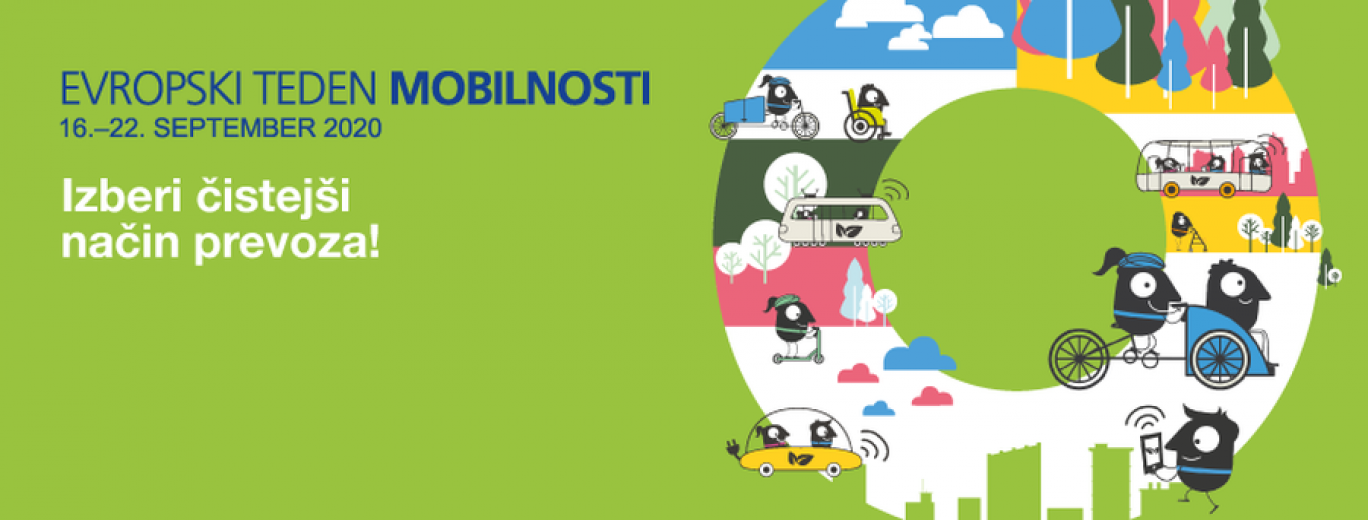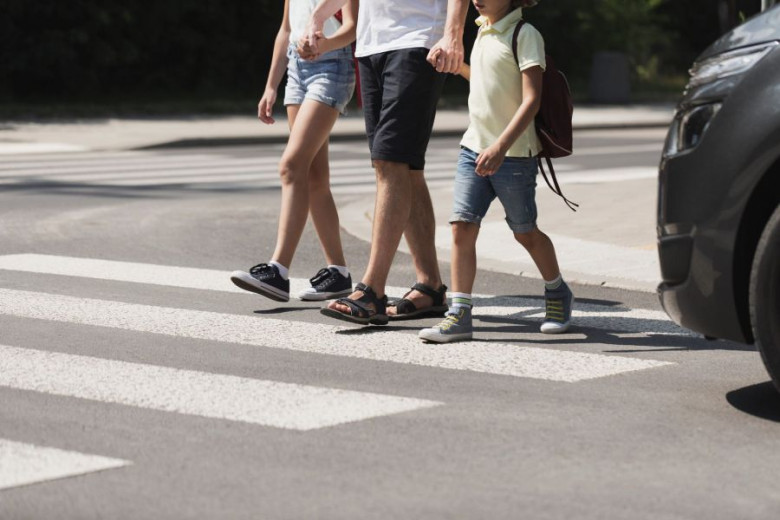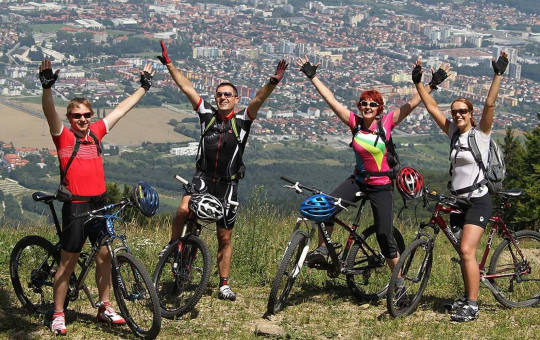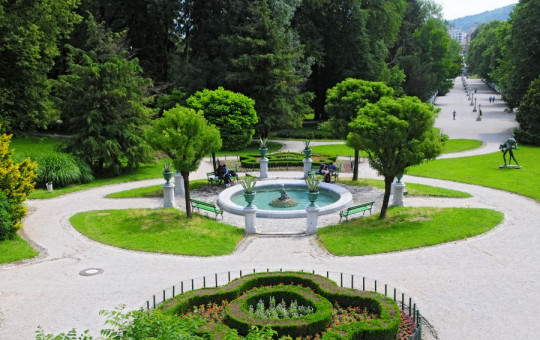Date: 16. September 2020
Time to read: 4 min
For quite some time now, large cities have been facing problems due to excessive traffic, noise and air pollution. After realising that car traffic is one of the greatest polluters, the "In town without my car!” (also known as Car-Free Day) initiative was launched in France in 1998. Over the years, the initiative grew and the aim of raising residents’ awareness about the impact of their chosen means of transportation became increasingly important. The Car-Free Day operation evolved into the European Mobility Week. In the period between 16 and 22 September, the Europeans collectively advocate living in a cleaner and healthier environment.
Climate-neutral Europe by 2050
As part of the European Green Deal, President of the European Commission Ursula von der Leyen presented an ambitious objective of making Europe climate-neutral by 2050. Although the number of cars is declining in numerous city centres, the use of cars in general is on the rise, along with transport emissions.
The 2020 European Mobility Week thus encourages individuals and local authorities to strive towards realising the long-term aim of making Europe climate-neutral.
-
 Transport is responsible for a quarter of the European Union's greenhouse gas emissions, and this share is growing steadily. Road transport alone, on the other hand, contributes more than 70% of emissions to all greenhouse gases generated by different modes of transport. Source: SURS. Photo: Samuele Errico Piccarini/Unsplash
Transport is responsible for a quarter of the European Union's greenhouse gas emissions, and this share is growing steadily. Road transport alone, on the other hand, contributes more than 70% of emissions to all greenhouse gases generated by different modes of transport. Source: SURS. Photo: Samuele Errico Piccarini/Unsplash
Mobility Week in Slovenia
The number of personal vehicles is noticeably growing in Slovenia as well, as are greenhouse emissions. Nevertheless, sustainable mobility is evolving. Local communities have recognised their role in these efforts and have actively engaged in raising locals’ awareness about traffic’s negative environmental impacts.
This year, as many as 78 Slovenian municipalities are involved in the campaign.
Once again, the European Mobility Week encourages us to think about our mobility-related habits under this year’s slogan: Zero-emission mobility for all! Schools, public and private companies, societies and other non-governmental organisations are invited to participate in addition to municipalities. This creates a community of activists that can share experience, ideas and advice.
-
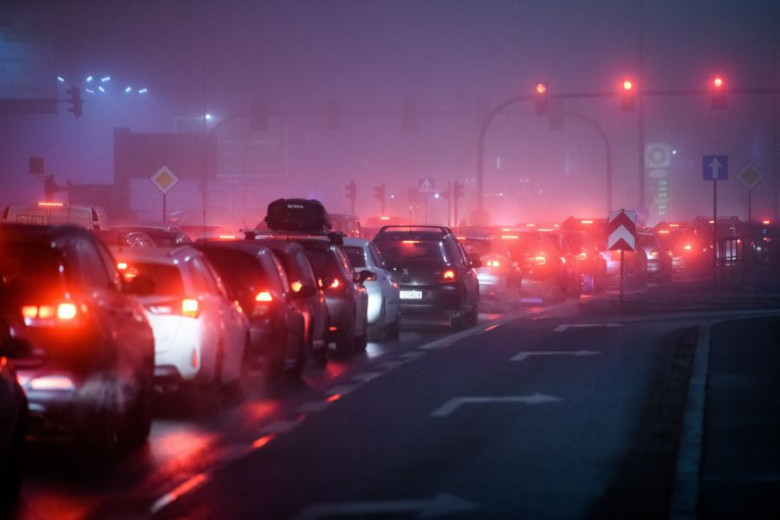 In Slovenia, emissions from transport originate almost exclusively from road transport, which is mainly due to the relatively small volume of air and water transport. Photo: Jacek Dylag/Unsplash
In Slovenia, emissions from transport originate almost exclusively from road transport, which is mainly due to the relatively small volume of air and water transport. Photo: Jacek Dylag/Unsplash
-
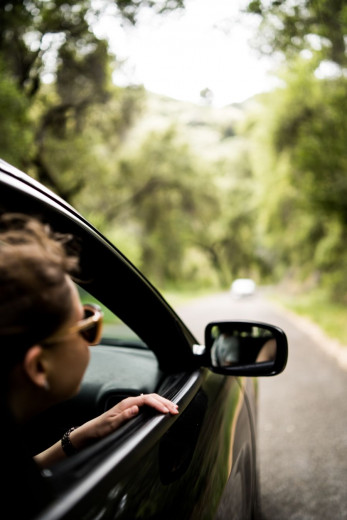 In the past 20 years, the number of registered passenger cars in Slovenia has increased by 35%. Source: SURS. Photo: William Bout/Unsplash
In the past 20 years, the number of registered passenger cars in Slovenia has increased by 35%. Source: SURS. Photo: William Bout/Unsplash
-
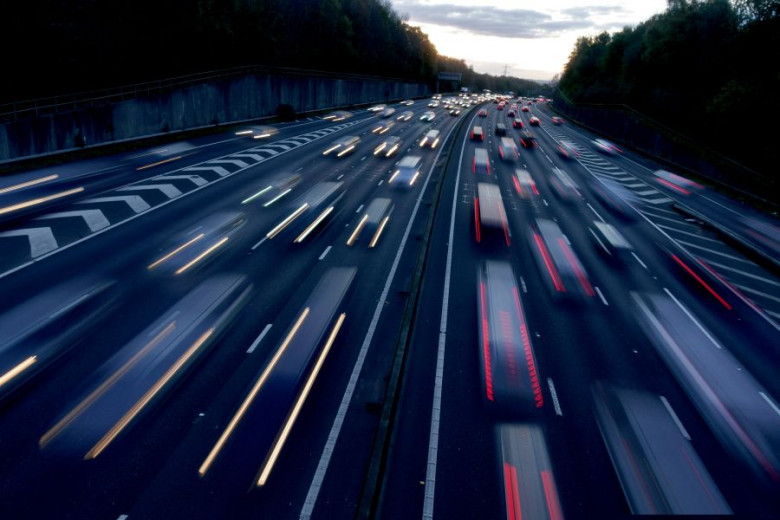 Of particular concern is the trend of CO2 emissions from road transport, which increased by 2% over the ten-year period (2008-2017), while total CO2 emissions decreased by 17% over the same period. Photo: Peter Cade/GettyImages
Of particular concern is the trend of CO2 emissions from road transport, which increased by 2% over the ten-year period (2008-2017), while total CO2 emissions decreased by 17% over the same period. Photo: Peter Cade/GettyImages
Municipalities
All urban municipalities in Slovenia are participating in the European Mobility Week project. The Municipality of Ljubljana is exemplary in this respect, as it has been participating in the project since its very beginnings. As our capital’s traffic is undoubtedly the most congested, its continued annual improvements for cyclists are highly encouraging. In the week from 16 to 22 September, the municipality is promoting sustainable mobility through a variety of events and activities.
On 22 September, which is Car-Free Day, certain roads in the centre of Ljubljana are symbolically closed off in order to promote alternative modes of mobility.
The municipality also collaborates with kindergartens and primary schools, raising awareness and promoting sustainable mobility.
According to the rather alarming data, only 25% of Slovenian pupils come to school on foot or by bicycle, as most of them arrive by car. A mere 15 years ago, as many as 75% of pupils walked or cycled to school. The educational White Bunny (Beli zajček) and Let’s Walk with Rosie the Hen (Kokoška Rozi) projects for sustainable mobility at Slovenian kindergartens and primary schools encourage children and their parents to leave their car at home.
Best practices
Several examples of best practices can be found in Slovenia. One such example involves connecting new neighbourhoods with public transport, thus making several routes possible without a car. Another is the rising use of electric cars, which seem to be the best alternative. Smart charging would make it possible for vehicles to take surplus electricity from the grid and return it when there is a deficit.
During the coronavirus pandemic, when public transport ground to a complete halt for a while, the use of bicycles, kick scooters and other alternative mobility sources increased drastically. This was an ideal opportunity to think differently about mobility.
What can each of us do to contribute to Europe’s climate neutrality? If at all possible, avoid travelling by air. Choose public land transport instead. Make as few trips by car as possible.
Walk, cycle or use public transport.
If using a car cannot be avoided, share the ride with others and do not drive aggressively.
-
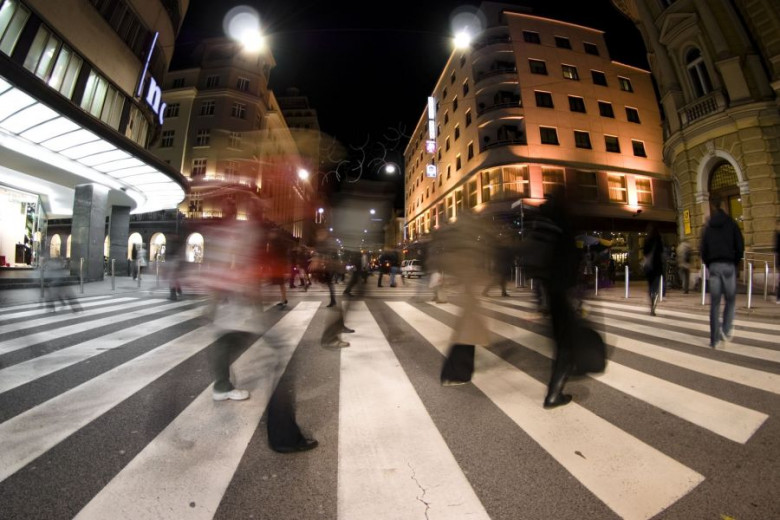 Zero-emission mobility for all! Photo: LIFE IP CARE4CLIMATE
Zero-emission mobility for all! Photo: LIFE IP CARE4CLIMATE
-
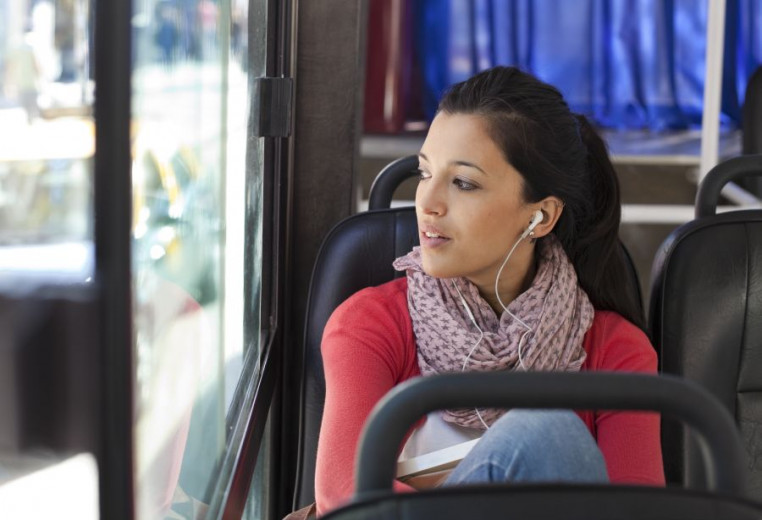 In the last ten years, the number of passengers in urban bus transport has increased by 24%, the number of passengers in intercity bus transport has remained approximately the same, while the number of passengers in domestic rail transport has decreased by 16%. Source: SURS. Photo: Kathrin Ziegler/GettyImages
In the last ten years, the number of passengers in urban bus transport has increased by 24%, the number of passengers in intercity bus transport has remained approximately the same, while the number of passengers in domestic rail transport has decreased by 16%. Source: SURS. Photo: Kathrin Ziegler/GettyImages
-
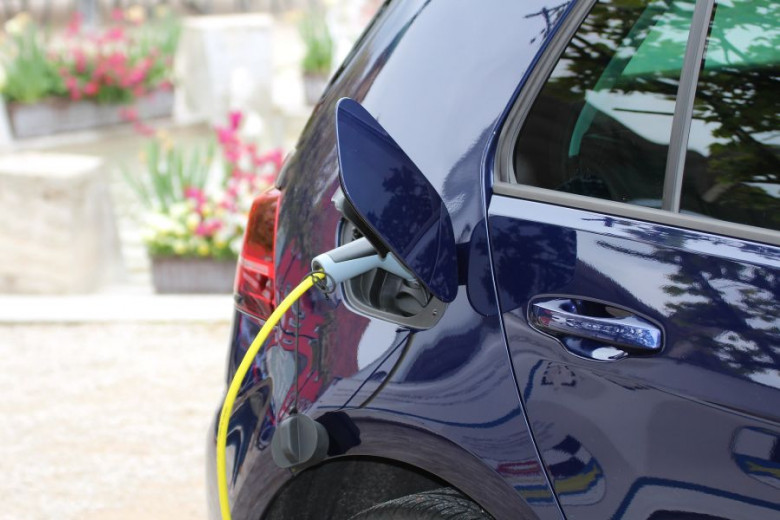 In Slovenia, only 1% of passenger cars do not drive on diesel or petrol. But the number of electric cars, as well as those with a hybrid drive, has been growing faster in the last three years due to the incentives offered by the Eco Fund. Source: SURS. Photo: Bayern-reporter/Pixabay
In Slovenia, only 1% of passenger cars do not drive on diesel or petrol. But the number of electric cars, as well as those with a hybrid drive, has been growing faster in the last three years due to the incentives offered by the Eco Fund. Source: SURS. Photo: Bayern-reporter/Pixabay
-
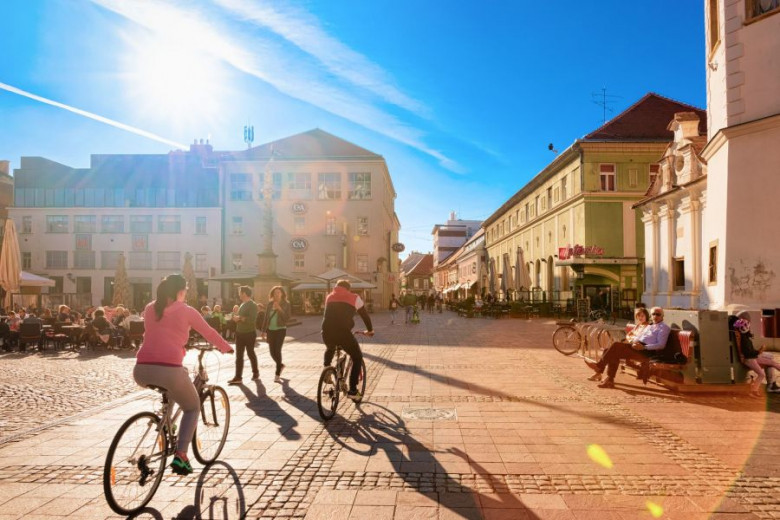 During the week from 16 to 22 September each year, municipalities promote sustainable mobility through various events and activities. Photo: LIFE IP CARE4CLIMATE
During the week from 16 to 22 September each year, municipalities promote sustainable mobility through various events and activities. Photo: LIFE IP CARE4CLIMATE
“Changing the population’s habits towards sustainable mobility is a long-term step towards cleaner and safer environment,” said Polona Demšar Mitrovič, national coordinator of ETM at the Ministry of Infrastructure, who concluded her thought with a lovely sentiment: “ETM is a celebration, during which as few cars as possible should be on our streets and roads, and a time when we chose a cleaner way to travel. We look forward to learning over the course of this week about numerous municipalities’ efforts to improve conditions for walking, cycling and using public transport, as well as holding round tables, workshops and lectures on sustainable mobility.”

